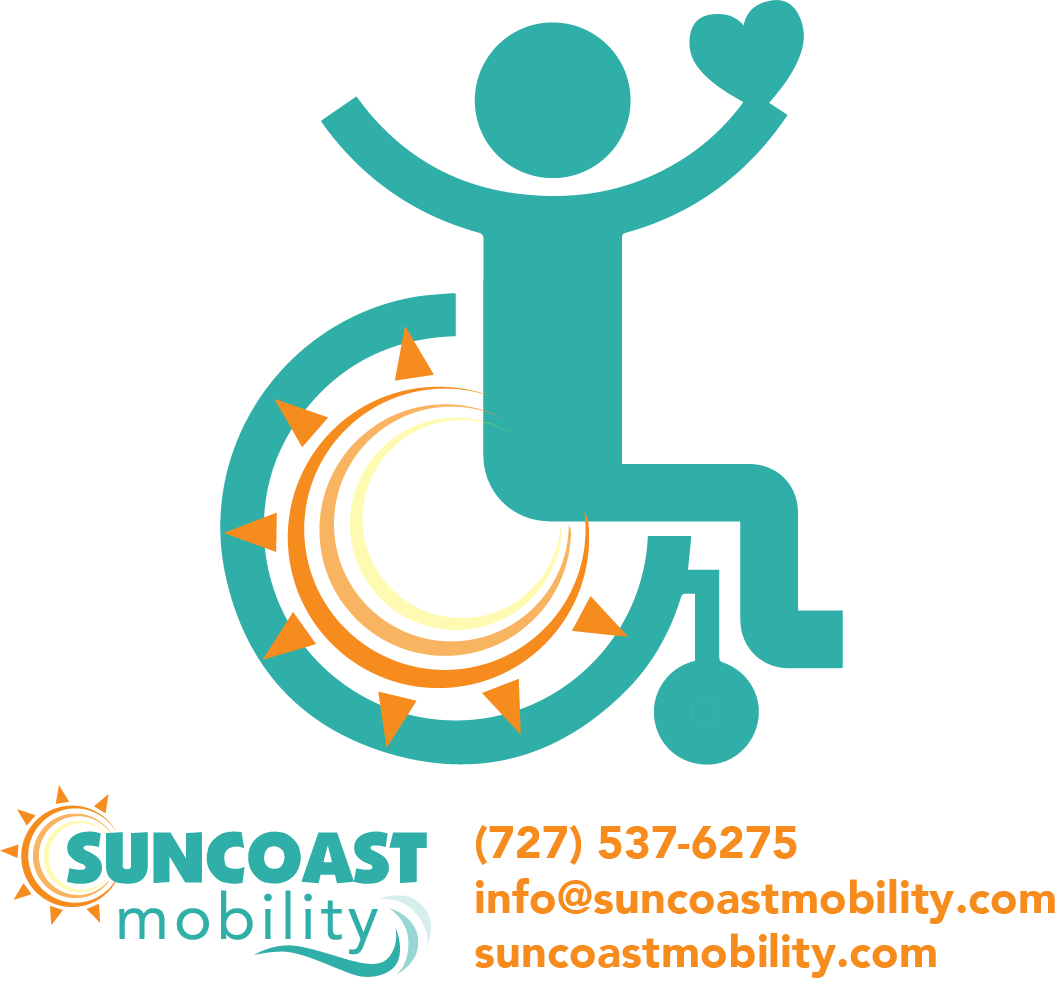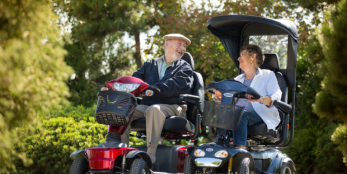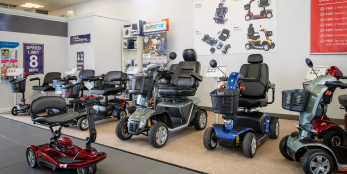Table of contents
Understanding Mobility Devices: Power Wheelchairs vs. Mobility Scooters
For individuals with mobility challenges, the two most common mobility devices available are power wheelchairs and mobility scooters. Both of these devices offer much-needed assistance for those who have difficulty walking, but they serve different purposes and have distinct features that cater to specific needs. Although both types of mobility aids can help users navigate daily tasks and environments, there are important differences between them. This article aims to explore these differences in detail and help you decide which option is right for your particular situation.
What is a Mobility Scooter?
A mobility scooter is a battery-powered device designed to assist individuals who have moderate difficulty with walking. Mobility scooters are ideal for those who can still manage some level of physical activity but need help to travel longer distances or over uneven terrain. They are typically more affordable than power wheelchairs, which makes them an accessible option for many people.
Design and Functionality of Mobility Scooters
Control Mechanism: Mobility scooters are controlled via a tiller—a steering column that requires arm and torso strength as well as coordination to operate. Because users need to steer and navigate using their arms, a certain level of dexterity and upper body strength is required to use a scooter safely and effectively.
Portability and Travel-Friendly: One of the key advantages of mobility scooters is their portability. Many models are designed to be easily folded or disassembled, which makes them easy to store in a car, at home, or even on an airplane. This portability eliminates the need for a vehicle lift for transportation, providing users with greater convenience when traveling.
Size and Stability: Mobility scooters come in a variety of sizes, with models offering either three wheels or four wheels. Three-wheel models have a tighter turning radius, which makes them ideal for indoor spaces or environments with limited space. However, they are less stable and may not perform as well on uneven ground. For better stability, a four-wheel scooter is recommended, particularly for use on outdoor terrains like sidewalks, parks, and rougher surfaces.
Despite their advantages, mobility scooters come with a few limitations:
Physical Requirements: As mentioned, they require users to have some degree of arm and torso strength to operate, so they may not be suitable for those with limited upper body strength.
Maneuverability and Storage: Mobility scooters are larger than power wheelchairs, which can make them more challenging to maneuver in tight indoor spaces. Additionally, their size means that they require more storage space, which can be an issue for users with limited storage options at home or in their vehicle.
What is a Power Wheelchair?
While mobility scooters are typically suited for individuals who need some assistance with mobility, power wheelchairs are designed for those who require a higher level of support and are more dependent on their device for everyday tasks. Power wheelchairs are commonly used by individuals who are more immobile and need constant assistance with moving from place to place, particularly within their home.
Design and Functionality of Power Wheelchairs
-
Joystick Control: Power wheelchairs are generally operated using a joystick, which allows the user to control the device with minimal physical effort. This makes them more accessible for individuals who may have limited strength in their arms, hands, or torso.
-
Compact and Maneuverable: One of the primary advantages of power wheelchairs over mobility scooters is their compactness. Power wheelchairs tend to have a smaller footprint, which allows them to easily navigate smaller spaces inside a home, such as doorways, narrow hallways, and around furniture.
-
Indoor Use: Power wheelchairs are typically optimized for indoor use, and they can navigate spaces that are often difficult for larger mobility scooters to access. This makes them an ideal choice for people who will primarily use their mobility device inside the house.
However, power wheelchairs are not as portable as mobility scooters. While some folding or disassembling models exist, they are generally bulkier and more difficult to transport. This means they are not as travel-friendly as scooters, which can be a drawback for users who need to move their wheelchair frequently.
Choosing the Right Mobility Device: Key Questions to Consider
When deciding whether to purchase a power wheelchair or a mobility scooter, it's important to ask yourself a few key questions to better understand your specific needs:
-
What is the mobility level of the user?
Is the user able to walk short distances with assistance, or are they more dependent on a device for daily movement?
-
How often will the mobility device be used?
Will it be used all day, every day, or only for occasional trips?
-
Does the user have the required upper body strength?
Can the individual comfortably operate the steering column (tiller) of a mobility scooter, or would they benefit from the joystick control of a power wheelchair?
-
Will the user be traveling frequently?
If travel is a consideration, will portability be important?
-
How critical is portability?
Is the user someone who needs to easily transport the device or store it in a vehicle, or is portability less of a concern?
-
Where will the device be primarily used?
Will the device be mostly used indoors, or will the user need to navigate outdoor terrain as well?
Are Electric Wheelchairs Better than Mobility Scooters?
There's no one-size-fits-all answer to whether an electric wheelchair is better than a mobility scooter. It ultimately depends on the user's individual needs.
Mobility scooters are ideal for those who have some upper body strength and can manage the tiller steering, but still need help with longer distances or outdoor travel. They are a great choice for individuals who don’t require constant assistance and prefer a more budget-friendly and portable option.
Power wheelchairs, on the other hand, are best for individuals who are more dependent on a mobility device for their daily activities. These devices are designed for those who need greater mobility support and would likely use the device every day, including inside their home.
Both power wheelchairs and mobility scooters have their pros and cons, but the decision ultimately depends on your lifestyle and how you plan to use the device. If you're still unsure, consider reaching out to a mobility expert who can provide personalized recommendations based on your specific needs.
Conclusion
Choosing between a mobility scooter and a power wheelchair ultimately comes down to an individual’s unique needs and lifestyle. Both devices offer valuable support for individuals with mobility challenges, but they cater to different requirements.
Mobility scooters are ideal for those who need assistance with longer distances and outdoor navigation, but still have some upper body strength and coordination to manage the steering tiller. Their portability and ease of transport make them a popular choice for those who travel frequently or need a device for occasional use.
On the other hand, power wheelchairs provide greater independence for individuals who are more dependent on a mobility device for daily tasks. With joystick control and a more compact design, power wheelchairs excel in indoor environments and offer superior maneuverability in tight spaces. Though less portable than scooters, they are the best option for those who require constant mobility assistance.
When deciding which option is best for you or your loved one, consider factors like upper body strength, frequency of use, portability, and the environments in which the device will be used. Consulting with a mobility expert can also help ensure that you make the most informed choice for your specific needs.
Ultimately, both power wheelchairs and mobility scooters can enhance quality of life, improve independence, and allow for greater mobility. It’s all about selecting the right device to fit your personal lifestyle, so you can move with confidence and ease.








